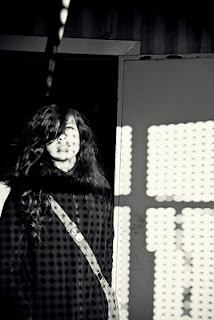 You want to take some pictures with your camera to illustrate your poster? Excellent! This is usually a much better choice than hopping onto the net and grabbing someone else’s images.*
You want to take some pictures with your camera to illustrate your poster? Excellent! This is usually a much better choice than hopping onto the net and grabbing someone else’s images.*Camera pictures are going to be bitmapped images, made of lots of individual pixels. To ensure your picture looks good when you print it full sized on a poster, it pays to do a little calculation.
Remember to set your camera for the highest resolution possible. You can always lower the resolution of a picture if necessary, but you can never increase the resolution of a picture (notwithstanding what you see on crime shows). A problem here is that cameras often describe their image sizes in megapixels, which describes the total number of pixels in the image. For our purposes, it’s easier to think in terms of the number of pixels along the edges.
My camera gives me a little more than 3,000 pixels along the long edge of the photo at its highest resolution. But I have to be thinking about how many pixels will go into each inch on the poster.
Printers are still largely measuring print resolution in dots per inch (dpi); a dot is essentially a pixel. A old, low end fax machine might be 200 dots per inch; a laser printer might be 1,200 dots per inch. 300 dots per inch is usually considered an acceptable resolution for printing.
If want to keep my picture reasonably sharp, I want to make sure the picture has 300 dot per inch or better on the paper when printed full size.
For my camera, 3,000 pixels / 300 dots per inch = 10 inches. Thus, I don’t want the final size of the picture on my poster to be much more than 10 inches.
This particularly becomes an issue because people will pull images from the net to use on their posters. For instance, people will grab an institutional logo or such from a website and enlarge it. But many net images are only a few hundred pixels wide.
If you have an 800 pixel wide image, and you want to print it at 24 inches across, you have a print resolution of about 30 dpi. It’ll look like rubbish. It’ll still look poor if enlarged to 12 inches.
Related posts
Will it scale?
* Picture by Potatojunkie on Flickr, and used under a Creative Commons license. Hey, this is a blog, not a poster. Remember, do as I say, not as I do!






3 comments:
Thanks for the interesting post. I just had one thought regarding image resolution and size. The 300 dpi rule is important for material that will be examined closely, but the further away people are while looking at your work, the less necessary it is to have high resolution images. The rule of thumb that I've seen in commercial printing is 100 dpi for every ten feet away you intend to view the picture.
Thus, if you're printing studio portraits to be viewed on a wall from 10 feet away, 200 dpi is acceptable; and if you're creating posters meant to catch attention from 20 feet away, 100 dpi is acceptable.
To put it in perspective, these are both higher resolution than what you will see on a computer screen (which is about 96 dpi); and most images from the web are intended to be viewed on a computer screen.
Because research posters seemed to be viewed from 6 - 10 feet away, 200 dpi might be a good goal to shoot for.
Another point is the resolution of the image in real life. I'm thinking particularly of electrophoresis gels and various blots thereof; they are inherently blurry and you can get away with quite low resolution photos. You don't WANT to, but an awful lot of students and researchers take a low res pic of their gel then biff the gel. You can tell them to always use high res photos until you are blue in the face, but they just don't. They are never wanting to do the experiment again so you just have to use what you have, and truthfully, a low res gel photo with extra pixels interpolated is not so bad.
I am an amateur Photographer. I enjoy my work and love to deliver the best. I always love to learn new things. I have faced problems recently several times with low resolution images. I need to make posters for my clients but sometimes the provided pictures from my clients are low resolution images. But thanks to God I found solution for this problem. I goggled with the help one of my friends who is also a new graphics designer and found software which allows accurate, high quality and realistic enlargements at any zoom factor. It is named Reshade image resizing tools. Easy to use automatic settings make Reshade the perfect choice for beginners. Advanced controls are available for professional users. Anybody can solve this type of low image resolution problem solution from Photo enlargement software. Hope this will be helpful. Thanks. ---Mark
Post a Comment